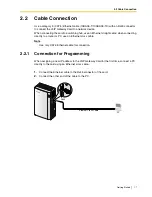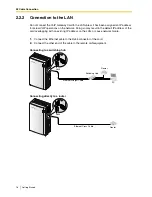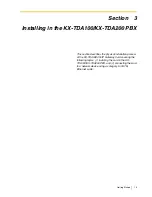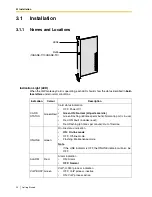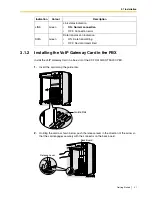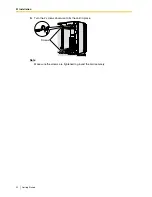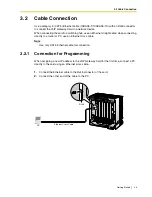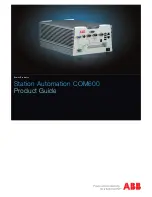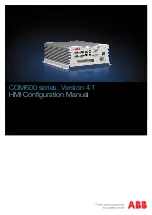
1.2 Network Devices and Numbering Plan
8
Getting Started
1.2.1
Network Application
QSIG Network Interface
QSIG is a protocol based on ISDN (Q.931) that offers enhanced PBX features in a private
network. The QSIG network supports private communications by the TIE line service method.
Implementation of VoIP Gateway Cards provides a VoIP interface to employ a QSIG network
between PBXs at different locations by using an IP network instead of conventional telephone
networks.
Note
CLIP service is the only QSIG service available between the KX-TDA5480/KX-TDA0484
and KX-TDA0480 VoIP Gateway Cards. There is no compatibility for other QSIG services.
Types of IP Network
The VoIP Gateway Card’s quality of performance depends on the type of IP network in use.
Managed IP networks provide better quality of service compared to unmanaged networks such
as the Internet, where quality of service is not guaranteed.
Firewall
A firewall protects the internal networks of an organization against unauthorized penetration
from outside. When routing a VoIP network through a firewall, some performance degradation
may result. If for practical reasons you must route the VoIP network through a firewall, refer to
"A1.3 Network Devices" for more details.
1.2.2
Numbering Plan Example
There are two methods to plan your numbering system, as follows:
This section provides a network numbering mechanism using the PBX code method based on
the previous example diagram. Configure your network referring to this example.
Examples of recommended IP networks
•
Digital Leased Line
•
IP-VPN (Virtual Private Network)
•
Frame Relay
Not recommended
•
Internet
(Delays and loss in data transmission
can cause degradation in speech
quality.)
PBX code
method
In addition to the destination number, the caller dials the unique PBX code
of the PBX to which the called party is connected. Therefore, extension
numbers at separate PBXs in the network can overlap. For example, each
PBX in the network can have an extension whose number is 201.
Extension
number method
The caller dials only the destination number of the called party to call
through PBXs at different locations (hence there are fewer digits to dial
than with the PBX code method). To employ the extension number
method, no two PBXs can have extensions sharing the same number. For
example, if one PBX in the network has an extension whose number is
201, no other PBX can have an extension with the same number (201).
Summary of Contents for KX-TDA0480
Page 4: ...4 Getting Started ...
Page 44: ...4 3 Programming the VoIP Gateway Card in the Chicago Office 44 Getting Started ...
Page 50: ...5 2 Programming the PBX in the Chicago Office 50 Getting Started ...
Page 51: ...Getting Started 51 Appendix A Guidance for VoIP Installation ...
Page 61: ...Getting Started 61 Appendix B Alternative Numbering Plan Example ...
Page 69: ...Getting Started 69 Appendix C Initialization of the VoIP Gateway Card ...
Page 72: ...C1 Initializing the VoIP Gateway Card 72 Getting Started ...
Page 73: ...Getting Started 73 Appendix D Using the KX TDA5480 KX TDA0484 and KX TDA0480 in One Network ...
Page 75: ...D1 Considerations in Installation Getting Started 75 ...

















